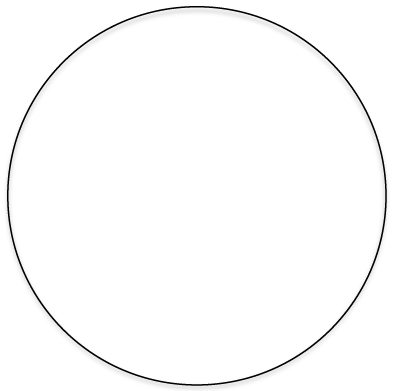Lab Activities
A list of words is provided below that you are expected to identify, learn, and label on the models provided. Note that not all models will have some of the organs/structures, so be sure to find them on an alternate model. You must use all the words provided. Using the colored tape provided, write the number that corresponds to the organ/structure and place them on your model. When complete, notify your TA so they may check your work.
For each additional station, directions will be provided for the activity.
Station One: Mouth
Label the models of this station with the number that corresponds to the appropriate structure of the peripheral nervous system using the colored tape. When you are finished, ask your TA to check your labeling. Before leaving the station, remove all the labels you have placed on the model.
Note: For the following structures, be able to differentiate between left and right halves when applicable.
Mouth
|
#1 labial frenulum |
#3 hard palate |
#5 uvula |
|
#2 fauces |
#4 soft palate |
|
Tongue
|
#6 tongue |
#9 fungiform papillae |
#11 circumvallate papillae |
#13 taste pore |
|
#7 lingual frenulum |
#10 filiform papillae |
#12 taste bud |
#14 base |
|
#8 apex |
|
|
|
Teeth
|
#15 incisor |
#18 molar |
#21 root |
#24 pulp cavity |
#27 cementum |
|
#16 canine |
#19 crown |
#22 enamel |
#25 pulp |
#28 periodontal ligament |
|
#17 premolar |
#20 neck |
#23 dentin |
#26 apical foramen |
#29 gingiva |
Salivary Glands
|
#30 submandibular |
#31 parotid |
#32 sublingual |
Station Two: Esophagus and Stomach
Label the models of this station with the number that corresponds to the appropriate structure of the peripheral nervous system using the colored tape. When you are finished, ask your TA to check your labeling. Before leaving the station, remove all the labels you have placed on the model.
Esophagus
|
#1 upper esophageal sphincter |
#2 lower esophageal sphincter |
Stomach
|
#3 gastric pits |
#6 cardia |
#9 pylorus |
#12 circular muscle layer |
|
#4 gastric glands |
#7 gastric body |
#10 pyloric sphincter |
#13 oblique muscle layer |
|
#5 fundus |
#8 rugae |
#11 longitudinal muscle layer |
|
Station Three: Liver, Gallbladder and Pancreas
Label the models of this station with the number that corresponds to the appropriate structure of the peripheral nervous system using the colored tape. When you are finished, ask your TA to check your labeling. Before leaving the station, remove all the labels you have placed on the model.
Note: For the following structures, be able to differentiate between left and right halves when applicable.
Liver
|
#1 right lobe of liver |
#3 right hepatic duct |
#5 common hepatic duct |
#7 hepatic canaliculi |
|
#2 left lobe of liver |
#4 left hepatic duct |
#6 hepatic lobule |
#8 falciform ligament |
Gallbladder
|
#9 fundus of gallbladder |
#11 neck of gallbladder |
#13 common bile duct |
|
#10 body of gallbladder |
#12 cystic duct |
|
Pancreas
|
#14 acinar cells |
#16 islets of Langerahans |
#18 pancreatic head |
#20 uncinate process |
#22 pancreatic duct |
|
#15 endocrine cells |
#17 pancreatic tail |
#19 pancreatic body |
#21 accessory duct |
|
Station Four: Histology
Sketch the slides available for today’s lab and specify the magnitude at which you are observing/ sketching. Be sure to identify and label your sketch with the corresponding structures listed beneath each slide.
 |
 |
|
Tooth |
Parotid Gland |
 |
 |
|
Tongue |
Esophagus Mucosa, Submucosa, Muscularis externa |
 |
|
|
Pancreas |
Liver |
|
|
|
|
Duodenum |
Large Intestine Lumen, Crypts of Lieberkühn, Mucosa, Submucosa, Muscularis externa, Serosa |

Vermiform appendix
Station Five: Small and Large Intestines
Label the models of this station with the number that corresponds to the appropriate structure of the peripheral nervous system using the colored tape. When you are finished, ask your TA to check your labeling. Before leaving the station, remove all the labels you have placed on the model.
Note: For the following structures, be able to differentiate between left and right halves when applicable.
Small Intestine
|
#1 microvilli |
#4 submucosa |
#8 enterocytes |
#11 ampulla of Vater |
#14 ileum |
|
#2 vili |
#6 muscularis |
#9 plicae circulares |
#12 sphincter of Oddi |
#15 ileocecal valve |
|
#3 mucosa |
#7 serosa |
#10 duodenum |
#13 jejunum |
|
Large Intestine
|
#16 crypts of Lieberkühn |
#20 serosa |
#24 right colic flexure |
#28 sigmoid colon |
#32 rectum |
|
#17 mucosa |
#21 cecum |
#25 transverse colon |
#29 teniae coli |
#33 anal canal |
|
#18 submucosa |
#22 vermiform appendix |
#26 left colic flexure |
#30 haustra |
#34 anal sphincter |
|
#19 muscularis |
#23 ascending colon |
#27 descending colon |
#31 epiploic appendices |
#35 anus |
Miscellaneous
|
#36 peritoneum |
#38 greater omentum |
#40 mesoappendix |
|
#37 mesentery of transverse colon |
#39 lesser omentum |
|
Station Six: Flow of Gastrointestinal Tract
As a group, determine the route boluses take through the various organs of the digestive tract. Be sure to identify the location of each structure on the vocabulary list of this lab section.

